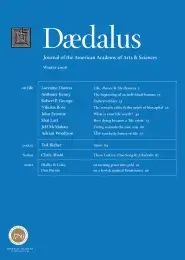How dying became a ‘life crisis’
The controversy over euthanasia is one indication of America’s fascination with biopolitical issues at the intersection of life and death.1 Most states prohibit physicians from actively assisting patients to hasten death, but recognize a patient’s right to withdraw unwanted life-support machinery (‘passive euthanasia’). Currently, Oregon is the only state that deviates from this standard: under its 1995 Death with Dignity Act, physicians may prescribe lethal medication to patients for self-administration (‘physician-assisted suicide’), but may not inject the lethal dose themselves (‘active euthanasia’).
Legal regulation notwithstanding, euthanasia continues to stir public debate. The recent case of Terry Schiavo reminded us that despite clear-cut legal resolutions, public opinion may still express unease with even the mild form of passive euthanasia. At the same time, the not-too-distant publicity surrounding Dr. Kevorkian, the Michigan pathologist who offered death to his patients, revealed that even a convicted felon can attract public sympathy.
Like the controversy over abortion, the euthanasia debate is conceptualized as a conflict between the sanctity of life and freedom of choice. Proponents of euthanasia fight for the ‘right to die’ in the name of patient autonomy, while opponents of euthanasia claim that freedom has its limits, and that other values, primarily the ‘sanctity of life,’ must trump individual rights. This conflict commonly boils down to where precisely one draws the line on the euthanasia spectrum: between active euthanasia, on the one side, and the continuation of medical treatment in all but futile cases, on the other.
This framework reflects a relatively recent, post–World War II mindset and ignores the roots of the euthanasia debate that date back to the nineteenth century. Too much reflection has been devoted to justifying different positions within the debate, and too little to figuring out why euthanasia became such a hotly debated issue to begin with. The response–too readily available–that euthanasia is a logical, if highly controversial, solution to the contemporary problem of dying is hardly satisfying. It merely gives rise to another question: why and how did dying become such a problem for us?
. . .
